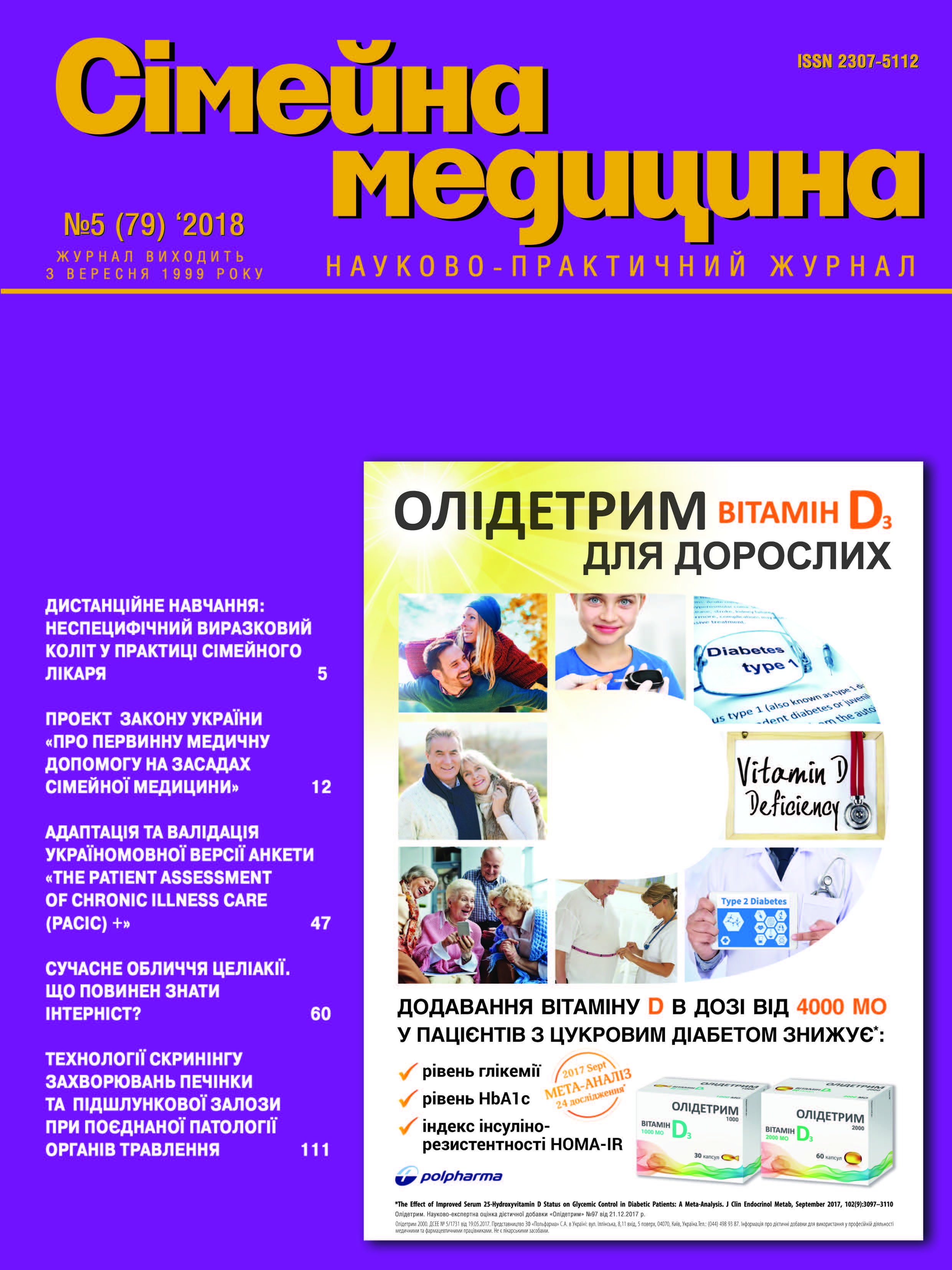Вплив комбінованої терапії на рівень глюкози і ліпідний профіль у пацієнтів з цукровим діабетом 2-го типу
##plugins.themes.bootstrap3.article.main##
Анотація
Згідно з Міжнародною федерацією діабету, на цукровий діабет (ЦД) страждає 7% населення світу. Оптимізація лікування діабету за допомогою рослинних препаратів дозволить запобігти медикаментозного навантаження пацієнтів.
Мета дослідження: оцінювання ефективності комбінованого лікування комплексним вітамінно-рослинним препаратом Інсувіт, метформіном та аторвастатином у хворих на ЦД 2-го типу.
Матеріали та методи. У терапевтичному відділенні ННМЦ «Університетська клініка» ЗДМУ обстежено 69 хворих (жінок – 44, чоловіків – 25) на ЦД 2-го типу. Середній вік пацієнтів – 63,4±7,82 року, тривалість захворювання – 7,0±4,11 року. Визначали рівень глюкози крові натще, глікозильований гемоглобін (HbA1c), ліпідний профіль. Пацієнти були рандомізовані на дві групи. В основну групу увійшли 33 пацієнта, які протягом 12 тижнів додатково до стандартної терапії (20 мг аторвастатину, 1000 мг метформіну) отримували комбінований препарат Інсувіт по 1 таблетці двічі на день. У контрольну групу – 36 пацієнтів з аналогічною терапією, але без призначення Інсувіту.
Результати. У результаті лікування в основній групі достовірно знизилися рівні HbA1c (на 10,7%), глюкози натще (на 14,7%) та тригліцеридів (на 35,4%) (р<0,05) через 12 тижнів порівняно з контрольною групою. У 39,4% пацієнтів основної групи спостерігалося зниження парестезій, що значно покращувало їхній загальний стан.
Заключення. Додаткове призначення препарату Інсувіт прискорює компенсацію показників рівня глюкози та HbA1с у пацієнтів з цукровим діабетом, що дозволяє швидше отримати їхні цільові рівні.##plugins.themes.bootstrap3.article.details##

Ця робота ліцензується відповідно до Creative Commons Attribution 4.0 International License.
Автори зберігають авторське право, а також надають журналу право першого опублікування оригінальних наукових статей на умовах ліцензії Creative Commons Attribution 4.0 International License, що дозволяє іншим розповсюджувати роботу з визнанням авторства твору та першої публікації в цьому журналі.
Посилання
Amy P. Campbell. Diabetes and Dietary Supplements // Clinical diabetes. – 2010. – Vol. 28, 1: 35–39 https://doi.org/10.2337/diaclin.28.1.35
Nutrition Recommendations and Interventions for Diabetes. A position statement of the American Diabetes // Association Diabetes Care 2008 Jan; 31(suppl. 1): S61-S78. https://doi.org/10.2337/dc08-S061
Глобальный доклад по диабету ВОЗ, 2016 г. PDF
IDF Global Guideline for Managing Older People with Type 2 Diabetes. PDF
Inzucchi S.E., Bergenstal R.M., Buse J.B. et al. Management of Hyperglycemia in Type 2 Diabetes, 2015: a Patient-centred Approach. Update to a Position Statement of the American Diabetes Association and the European Association for the Study of Diabetes // Diabetes Care 2015 Jan; 38(1): 140–149. https://doi.org/10.2337/dc14-2441
American Diabetes Association Standards of medical care in diabetes – 2016. PDF
Valdés-Ramos R., Guadarrama-López A.L., Martínez-Carrillo B.E., Benítez-Arciniega А.D. Vitamins and Type 2 Diabetes Mellitus // Endocr Metab. Immune Disord. Drug Targets. – 2015. – Mar. – 15 (1): 54–63. https://doi.org/10.2174/1871530314666141111103217
Arjuna B. The glycaemic outcomes of Cinnamon, a review of the experimental evidence and clinical trials Medagama corresponding author // Nutr. J. – 2015. – Vol. 14: 108. https://doi.org/10.1186/s12937-015-0098-9
Chung-Huang Tsai, E.Chin-Fun Chen, Hsin-Sheng Tsay, Ching-jang Huang. Wild bitter gourd improves metabolic syndrome: A preliminary dietary supplementation trial // Nutr. J. – 2012. – Vol. 11. – Р. 4. https://dx.doi.org/10.1186%2F1475-2891-11-4
Raynold V. Yin, Olivia J. Effect of chromium supplementation on glycated hemoglobin and fasting plasma glucose in patients with diabetes mellitus // Nutr J. 2015. – Vol. 14. – Р. 14. https://doi.org/10.1186/1475-2891-14-14
Esfandiar Heidarian, Massoud Amini, Mahmoud Parham, Ashraf Aminorroaya. Effect of Zinc Supplementation on Serum Homocysteine in Type 2 Diabetic Patients with Microalbuminuria // Rev Diabet Stud. – 2009. – Vol. 6(1). – Р. 64–70. https://dx.doi.org/10.1900%2FRDS.2009.6.64
Farrokhian A., Bahmani F., Taghizadeh M., Mirhashemi S.M., Aarabi M.H., Raygan F., Aghadavod E., Asemi Z. Selenium Supplementation Affects Insulin Resistance and Serum hs-CRP in Patients with Type 2 Diabetes and Coronary Heart Disease // Horm Metab Res. 2016. – Apr; 48 (4). – Р. 263–268. https://doi.org/10.1055/s-0035-1569276
Reduced Cardiovascular Mortality 10 Years after Supplementation with Selenium and Coenzyme Q10 for Four Years: Follow-Up Results of a Prospective Randomized Double-Blind Placebo-Controlled Trial in Elderly Citizens // PLoS One. – 2015. – Vol. 10(12). – Р. e0141641. https://doi.org/10.1371/journal.pone.0141641





